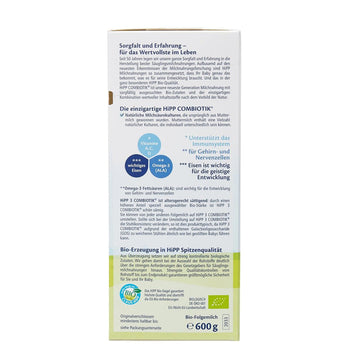The birth of a child marks a profoundly rewarding phase in a parent's life, bringing with it a deep sense of responsibility towards the child's well-being and health. Often, parents face the need to transition their infants to a different formula due to various reasons such as unavailability, discontinuation, or the discovery of a more suitable option. This article presents a structured approach to facilitate a smooth transition in infant formula brands, ensuring optimal nutritional benefits for the infant.
Rationale Behind Formula Transition
Parents may opt to switch their infant's formula for multiple reasons. These can include digestive issues like gassiness, disruptions in sleep patterns, or persistent fussiness. Additionally, factors such as cost-effectiveness, ease of preparation, and product availability play significant roles in the decision-making process.
Diversity in Infant Formulas
The market offers a range of infant formulas designed to cater to diverse nutritional requirements. These include formulas based on cow’s milk and hypoallergenic variants, each formulated to support the infant's growth and satisfaction.
Cow’s Milk-Based Formulas
Formulas derived from cow's milk are predominant in infant nutrition. They are engineered to mimic human breast milk, providing balanced nutrients for infants and facilitating easier digestion. However, some infants may exhibit intolerance towards cow's milk proteins, necessitating a switch to an alternative formula.
Plant-Based Formulas
For infants with lactose intolerance or allergies to animal proteins like casein, eggs, or whey, plant-based formulas offer a viable alternative. These formulas exclude animal proteins, potentially alleviating lactose intolerance issues and contributing positively to the infant's long-term health.
Hypoallergenic Formulas
These formulas, also known as elemental formulas, consist of proteins broken down into smaller components. Although often more expensive and differing in taste from cow or soy milk formulas, they are specifically designed for infants who struggle with digesting intact proteins.
Considerations for Formula Transition
When transitioning to a new formula, it is advisable to maintain consistency in formulation, such as switching between similar types of cow's milk formulas. Parents should seek formulas that are closely aligned with breast milk in composition, following thorough product research and testing. Additionally, the chosen formula should resonate with the family's ethical values.
Procedure for Formula Transition
To ensure a gentle transition, parents should gradually introduce the new formula by mixing it with the current one and observing the infant's response. Common reactions during this transition may include diarrhea, bloating, gas, constipation, and reflux. A minimum of three days is typically required for a complete transition.
Selecting an appropriate formula for an infant is a critical decision that should be made with consideration for the child's specific needs and health. It is recommended to source infant formulas from reliable retailers. For example, Euromallusa specializes in European-based infant formulas, including the Kabrita formula and other European goat milk products, tailored to support infants at various developmental stages. Our team is available to assist with any queries regarding our product range and its suitability for your child.


























